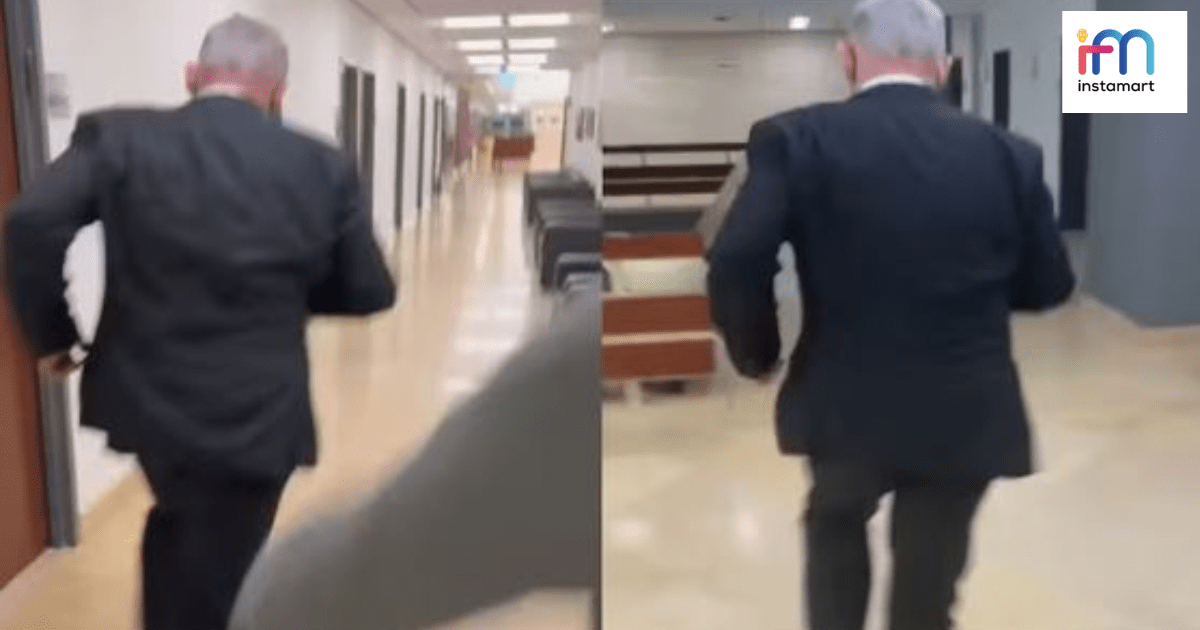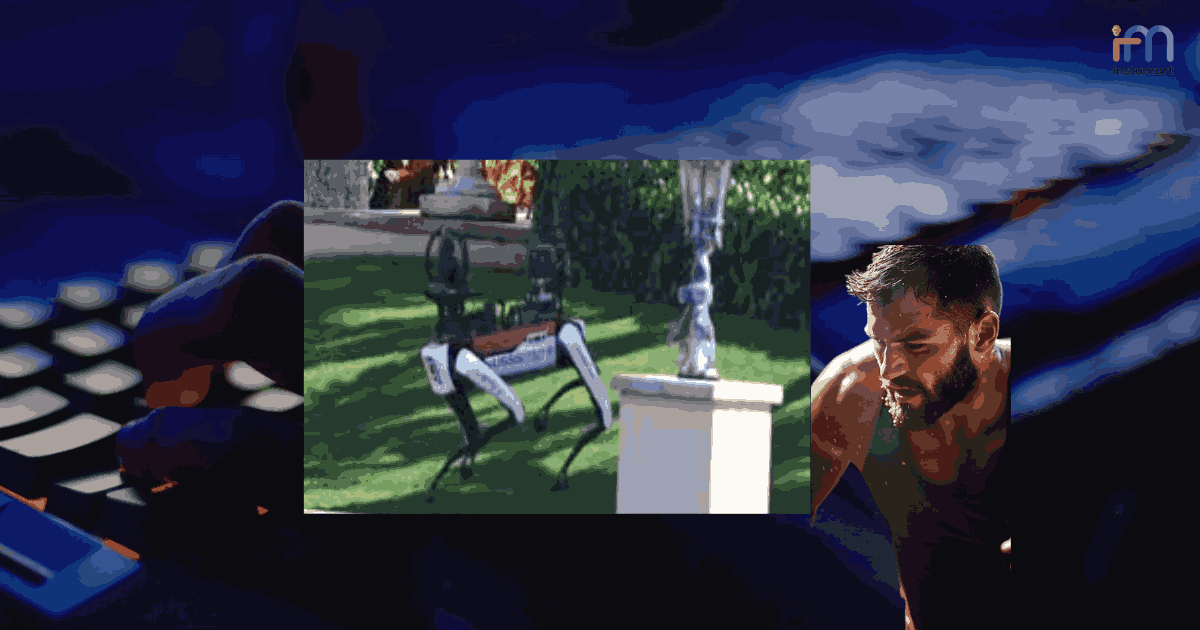On Tuesday 02 October 2024, waves of ballistic missiles from Tehran visited Israeli airspace in an assault that has completely blurred the distinction between fact and falsehood. Just hours after the attack, AI deception fueling tension in the Middle East can be seen in action. Flooded on social media, especially X formerly known as Twitter, Telegraph, and Instagram, it has become difficult even for the hawk-eyed fact checkers to tell reality from fiction.
In this article, we dissect how AI deception is fueling tension in the Middle East.
AI Misinformation After Iran Strikes
One of the video clips that received millions of views showed Benjamin Netanyahu, Israel’s Prime Minister running into a bunker for cover. The post titled “Moments in which Prime Minister of Israel, Benjamin Netanyahu, flees to a bunker in the face of the Iranian response.” Not only received millions of views but has also been widely shared.
A fact-check of the video clip shows that it was posted on Facebook in 2021 when the Prime Minister was running through the corridors of the Knesset. What the social media account reflected is a perfect work of AI deception tool to recreate the video.
In another post on X, rapid explosions are seen amid thick smoke with the words “MARK THIS TWEET IN HISTORY WW3 HAS OFFICIALLY STARTED!” What is truly astounding is not the 22 million views attracted to this AI deception. The issue is even after the owner of the post acknowledged that the video clip is AI-generated, comments showed that viewers believed it was a reality.
AI Deception Fueling Tension in Numbers
It is not the first time AI deception is fueling tensions in the Middle East. In April 2024 during an Iranian diplomatic mission in Syria, self-proclaimed open-source intelligence (OSINT) accounts posted 34 AI-generated images and videos within the first hours of the conflict. The report shows that 77% of AI deception comes from verified accounts.
Similarly, the October 7 Hamas attack resulted in 35 AI-generated images and videos on X with views reaching 35 million.
With the increasing trends in the use of AI deception fueling tensions, social media users are finding it more difficult to identify AI-generated content. According to the director of technology at the Institute for Strategic Dialogue (ISD), Isabelle Frances-Wright, “The fact that so much information is being spread by accounts looking for clout or financial benefit is giving cover to even more nefarious actors.”
So what has AI deception achieved in this era of conflicts?
AI deception is becoming an increasingly concerning factor in fueling tensions in conflict zones like the Middle East, where disinformation and manipulation can have grave consequences. The use of artificial intelligence to create and spread deceptive content—whether through deepfakes, disinformation campaigns, or cyberattacks—is exacerbating already volatile situations. In the context of ongoing wars, this AI-driven deception can intensify violence, deepen mistrust between parties, and make conflict resolution far more difficult.
Deepfakes and Disinformation
One of the most dangerous aspects of AI deception in war is the rise of deepfakes—AI-generated videos or audio recordings that appear authentic but are completely fabricated. These deepfakes can manipulate leaders’ speeches or fabricate military events, causing confusion and panic. For example, an AI-created video showing a political leader making inflammatory statements or calling for aggression could spark unrest or escalate a military conflict. The ability of AI to create hyper-realistic content means that it is becoming harder to distinguish truth from falsehood, leaving governments, media, and the public vulnerable to manipulation.
In the Middle East, where trust between rival groups is already fragile, deepfakes are used to mislead the public or provoke reactions based on false narratives. For example, in a region marked by political and religious tensions, a deepfake portraying a religious leader endorsing violence or a foreign government’s interference could rapidly incite violence. Such deceptive tactics can erode any remaining trust between opposing factions, making peace-building efforts more challenging.
Cyber Warfare and AI-Driven Misinformation
AI is also being used to automate and enhance disinformation campaigns through social media and other platforms. By deploying AI algorithms that target specific demographics with fake news, governments or militant groups can manipulate public opinion on a large scale. These disinformation campaigns can exploit existing political divisions, fueling hatred, fear, and misunderstandings among different communities. AI-driven misinformation escalates conflicts by spreading misleading information about troop movements, military strikes, or political events.
Cyber warfare, enhanced by AI, is another dimension of this problem. State and non-state actors alike use AI to launch sophisticated cyberattacks, disrupting critical infrastructure, communications, and military systems. In a war scenario, AI-powered cyberattacks could target defence systems, paralyzing a country’s ability to respond to military threats. This form of AI deception leaves nations vulnerable to unexpected strikes or large-scale disruptions, further destabilizing the region.
Propaganda and Psychological Warfare
AI has also amplified the scale and effectiveness of propaganda in war zones. Governments, militant groups, and other actors can now use AI to create and distribute content that manipulates public sentiment and controls narratives. By using machine learning algorithms to tailor messages for different audiences, these actors can reinforce political or ideological views that inflame hatred or motivate violence. In the Middle East, where propaganda has long been a tool of war, AI has made these campaigns more efficient, targeting individuals through social media platforms with precision.
For instance, AI can be used to create tailored propaganda that radicalizes young individuals, encouraging them to join militant groups. Similarly, false narratives designed to portray a particular faction as victorious or a government as weak can demoralize populations or embolden insurgents. In an environment where trust in media and authorities is already low, the spread of AI-generated propaganda can push communities further toward violence.
Difficulty in Trusting Information
AI deception is also making it more difficult to trust information coming out of conflict zones. Journalists, diplomats, and international organizations rely on data, images, and videos to report on or intervene in conflicts. However, with the advent of AI-generated fake content, it has become increasingly difficult to verify the accuracy of information. This can have dangerous consequences in the Middle East, where misinformation leads to international misunderstandings or trigger military responses based on false intelligence.
The lack of trust in information sources can also delay peace efforts. Negotiations between conflicting parties often rely on verified facts, but AI-generated deception can undermine these efforts by creating doubt or spreading false narratives that make diplomacy seem impossible. For example, a fake video of an attack could derail peace talks or lead one side to prematurely launch a counterattack based on incorrect information.
International Escalation
AI deception is not only a regional problem but also a global one, as it has the potential to draw in international actors based on misleading information. In the Middle East, where global powers often have vested interests, fake intelligence or fabricated military incidents can provoke unintended escalations. A deepfake video showing the involvement of a foreign military power in a regional attack could lead to retaliatory measures or sanctions based on false evidence, drawing outside countries into the conflict.
In sum…
AI deception is amplifying existing tensions in the Middle East by spreading disinformation, destabilizing trust, and making conflict resolution more difficult. As AI technology advances, the risks of deepfakes, cyberattacks, and propaganda will only grow, complicating efforts to achieve peace in the region. To counter these challenges, international cooperation and advanced detection technologies will be crucial to identify and neutralize AI-driven deception before it leads to greater conflict and instability.
Read more of AI News Here: https://ainews.instamart.ai/openais-latest-moves-to-empower-developers-and-tackle-cyber-threats/







